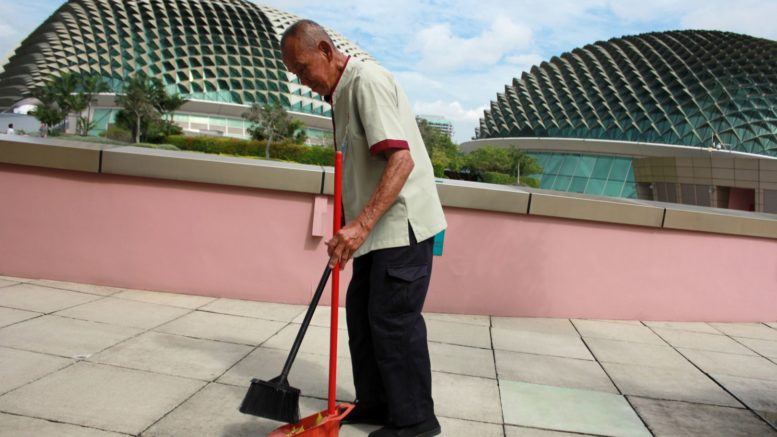If the Progressive Wage Model (PWM) has failed for cleaners – will it work for F & B workers?
I refer to the front page headlines article “F & B workers to be assessed if they can get on wage ladder” (Sunday Times, Jun 24).
It states that “Kitchen helpers and other low-wage workers in the food and beverage (F&B) industry could be next in line for a basic wage and structured increases under the Progressive Wage Model (PWM).
There is no publicly available data, but The Sunday Times understands there are over 30,000 low-wage workers in the F&B sector who earn $2,000 or less a month. The median monthly basic wage of a hawker stall assistant in 2016 was $1,100, while kitchen assistants got $1,117 and waiters $1,300.”
The PWM which was launched in 2012 has clearly been an utter failure.
Here’s why.
In this connection, according to the Ministry of Manpower’s (MOM) web site – Progressive Wage Model (PWM) Cleaning Sector – “If you have new service contracts that starts from 1 July 2017, you must use the following revised wages” – (at least) $1,060 for Group 1 – Office & Commercial – General/Indoor Cleaners, (and) Group 2 – F & B Establishment – General Cleaners”.
Isn’t a basic monthly salary of $1,060, including employee’s CPF still very very low?
Wages fell from $1,277 to $1,170 in 17 years?
In this connection, according to the article “Mindset change needed to help low-wage workers” (Straits Times, Feb 7, 2012), in 2000 – the median gross wage for cleaners and labourers was $1,277.
Real wage fell 31% in 17 years?
After accounting for inflation for the last 17 years or so, I estimate that in year 2000 dollars (June 2000 CPI 74.371), the $1,170 median gross salary of hawker centre cleaners now (note: I cannot find “cleaners and labourers” wage statistics in the MOM’s wage benchmarking tool) is equivalent to only about $873 in 2000 dollars. So, what this may mean is that the real pay of cleaners has declined by about 31 per cent in the last 17 years (2017 CPI 99.502) or so.
Talking about $1,000 pay since 2008?
In this connection, we have been talking about paying cleaners $1,000 since 2008 – “Full-time cleaners now earn about $1,000 a month on average, compared to about $750 before the (Town Councils’ cleaners’) scheme was launched in 2008” (“Cleaners’ pay up $250 to $1,000: Congratulations?“).
So many schemes in the last 8 years?
In the last eight years or so, we have had so many schemes and initiatives to raise cleaners’ pay to $1,000 (see below).
– ““Progressive wage concept initiative to raise the wages of cleaners” (“Measure wage targets in hourly pay, not gross total“, Jun 20, 2012)
“Unprecedented move by a group of officials from unions, cleaning companies and the Government would raise the pay of cleaners by 23 per cent” (Oct 19, 2012)
“Contracts would only be awarded to cleaning companies awarded the Clean Mark Accreditation” (“Parliament: Replies that never answer the question?“, Nov 14, 2012)
“The National Trades Union Congress ( NTUC) has set a target to raise 10,000 cleaners’ monthly salary to at least $1,000 by 2015″ (“NTUC: Wages need to account for standard of living?“, Dec 20, 2012)”
Another interesting read on the same day in the Sunday Times is Chua Mui Hoong’s “Fight the world of lies and gaslighting with the blaze of truthful inquiry“.
Uniquely Singapore!
Leong Sze Hian
